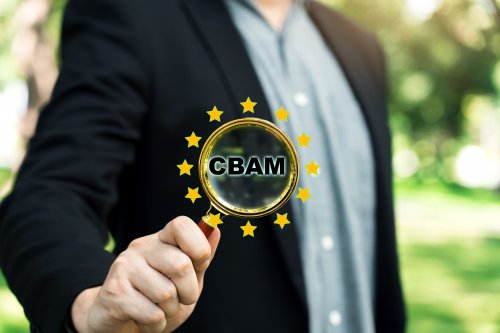By the end of 2022, the European Union should adopt the CBAM — the carbon adjustment mechanism for imports. Currently, trialogues are ongoing on this issue — informal negotiations between the European Parliament and the European Council with the participation of the European Commission, during which a common approach to regulatory legal acts is developed based on amendments proposed by both co-legislators.
Environmental lawyer and climate policy expert Jakub Bednarek analyzed the mechanism in a blog post on Ejiltalk, EcoPolitics conveys a summary of the material.
CBAM will set a price on carbon emissions of certain imported products: cement, iron and steel, aluminum, fertilizers, electricity. This price will reflect the cost of CO2 allowances in the EU Emissions Trading System (EU ETS). Including In theory, the equalization of the carbon price should lead to the creation of a level playing field for producers from the EU and third countries.
The aim of the instrument is to protect the EU from carbon emissions, while allowing for stricter national climate change policies to reduce emissions by 55% (compared to 1990 levels) by 2030.
CBAM is the subject of many controversies, especially regarding its compatibility with GATT94 and other multilateral agreements concluded by members of the World Trade Organization. The blog author explains the possible differences between CBAM and the principle of common but differentiated responsibilities and the right to development, both of which are of primary importance to least developed countries (LDCs).
General, but differentiated duties
The principle of shared but differentiated responsibility is at the heart of international climate law. According to Art. 2 para. 2 of the Paris Agreement:
"They will be implemented to reflect fairness and the principle of common but differentiated responsibilities and corresponding opportunities, in the light of different national circumstances."
Equivalent provisions can be found in the UN Framework Convention on Climate Change and the Kyoto Protocol.
This principle is commonly understood as the embodiment of justice in international climate law. On the one hand, it recognizes that the atmosphere is a global community and that all states have a shared responsibility to mitigate the effects of global warming.
On the other hand, it points to the fact that not all countries bear the same responsibility for greenhouse gas emissions and do not have the same opportunities to reduce emissions. It is believed that developed countries have an obligation to take the lead in combating climate change, leaving plenty of time for other countries to strengthen their capacity to do so.
An example of this is the practice of submitting Nationally Determined Contributions (NDCs) to the Paris Agreement, in which states report their intended emission reduction targets. On average, developed countries declare more ambitious emission reduction targets than other countries, especially in the short term.
By adjusting the carbon price at the border, the CBAM leads to the extension of the EU's strict ETS rules to products imported from third countries. When the regulation enters into force, importers will be required to provide CBAM certificates, the price of which is the same as EU ETS allowances (currently around €70 per tonne of CO2-equivalent), to cover the emissions contained in products supplied to the European market .
Simultaneously the regulation provides for very limited exceptions. De jure, only products originating from countries with cap-and-trade carbon pricing systems linked to the EU ETS, which are currently only CBAM countries, will be exempted from its application. In addition, de facto exempted from the financial obligations set out in the CBAM regulation will be products for which an equivalent EU ETS carbon price has been paid in the country of origin.
Despite the fact that NSD accounts for less than 0.1% of imports of CBAM products into the EU, the loss of market share could have a detrimental effect on the economies of these states. For example, in 2020, aluminum exports to the EU accounted for almost 7% of Mozambique's GDP. A strong argument can be made that the EU, by adopting the CBAM in its current form, would violate the right to development of people living in the LDC, adversely affecting the economic situation in these states, which will lead to an increase in the level of poverty.
A possible way to align CBAM with EU human rights obligations is to legally ensure that at least all CBAM revenues collected from products originating in the NSDs are returned to these states to support decarbonisation and climate change adaptation. A similar proposal found its place in the amendments (Article 24a) to the CBAM proposed by the European Parliament, which are currently at the stage of negotiations. Unfortunately, member states were quite skeptical about such mechanisms.
Conclusions
In its strategic documents, as well as in the speeches of its officials, the EU strongly emphasizes the goal of implementing a fair green transition that "leaves no one behind." According to the author of the blog, in order to implement a just transition in its external dimension, the EU must adhere to the principle of common but differentiated responsibility, as well as the right to development, which embody substantial legal obligations. The coming weeks, during which the final form of CBAM will be decided, will reveal the extent to which the union decides to invest its money.





